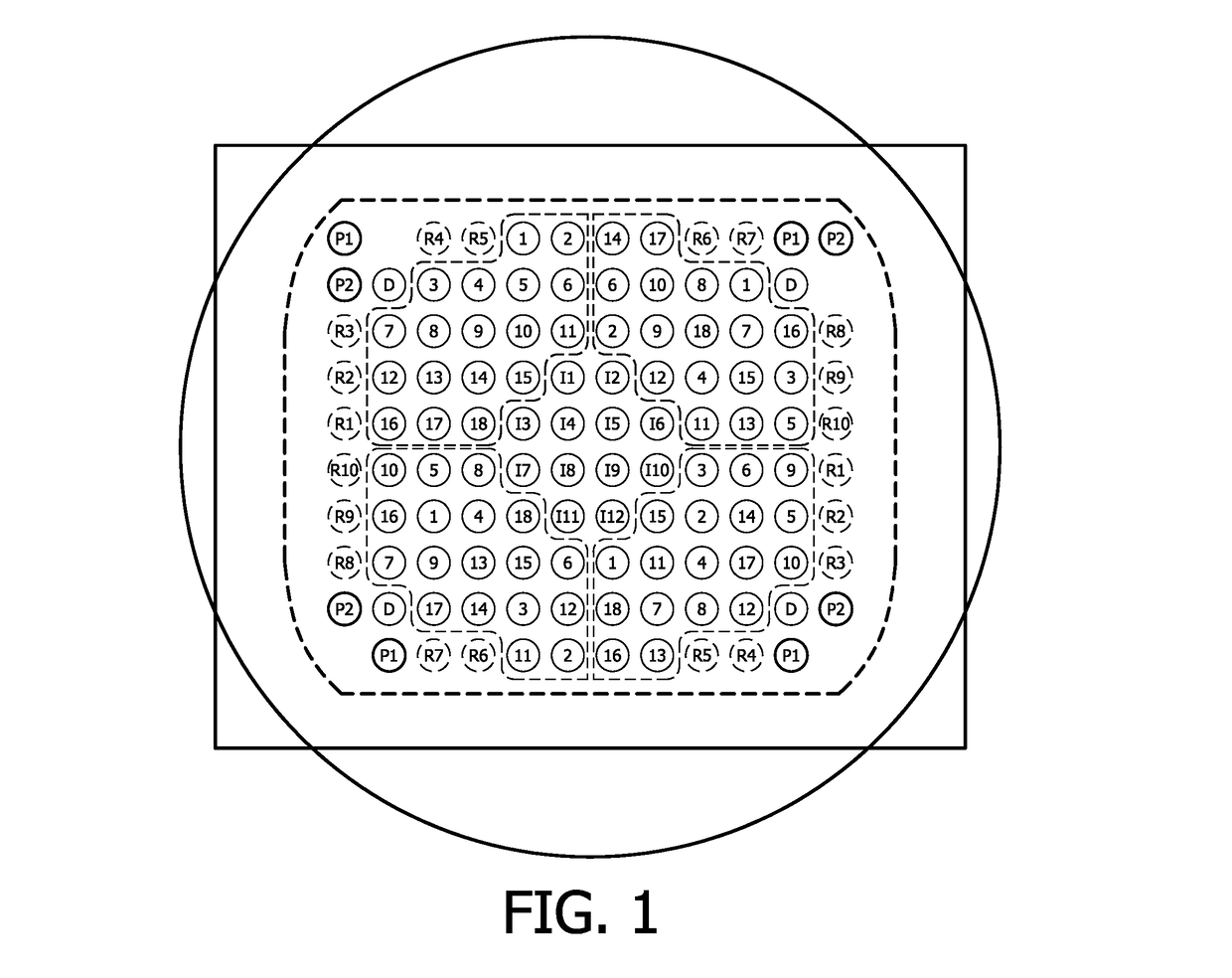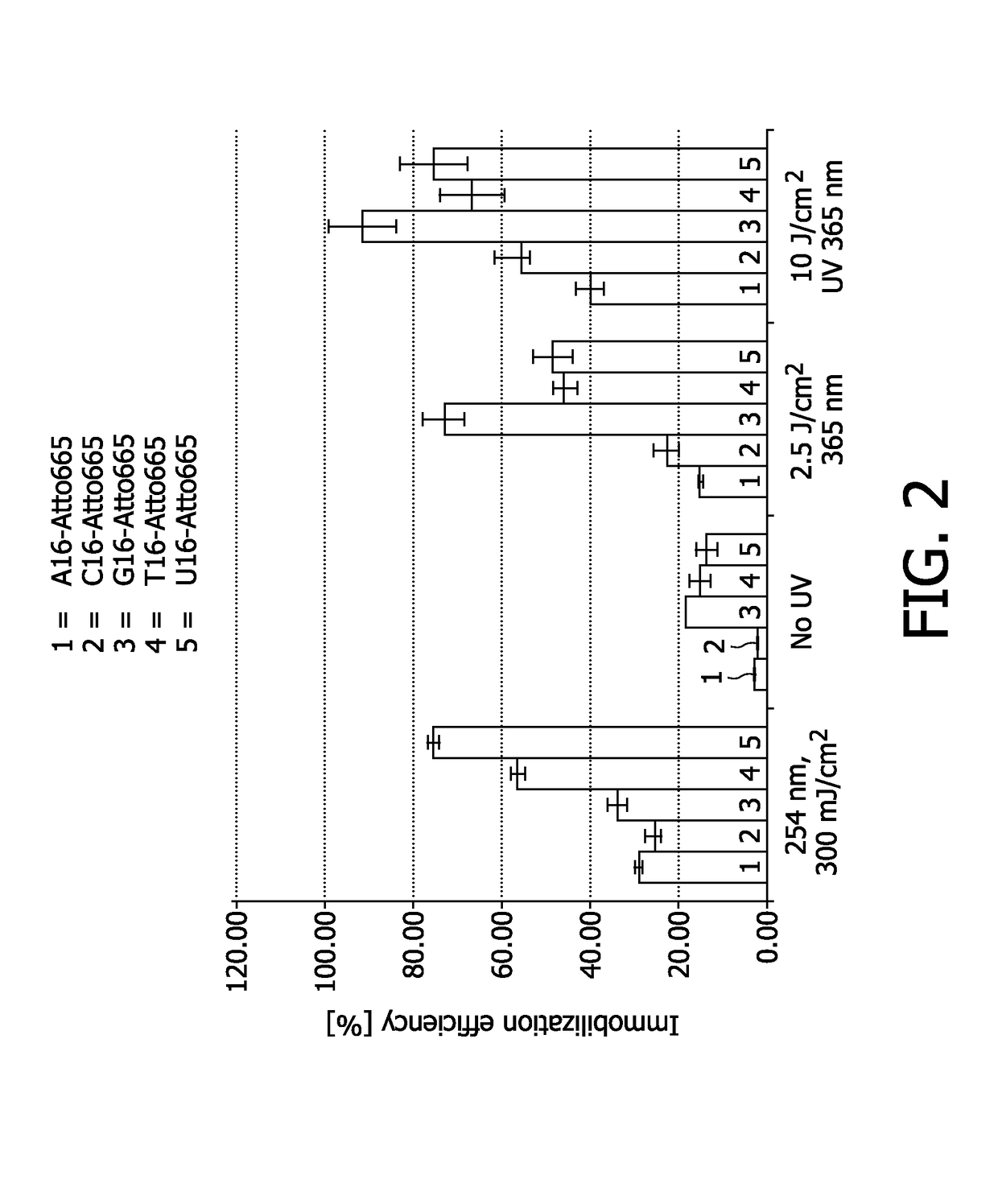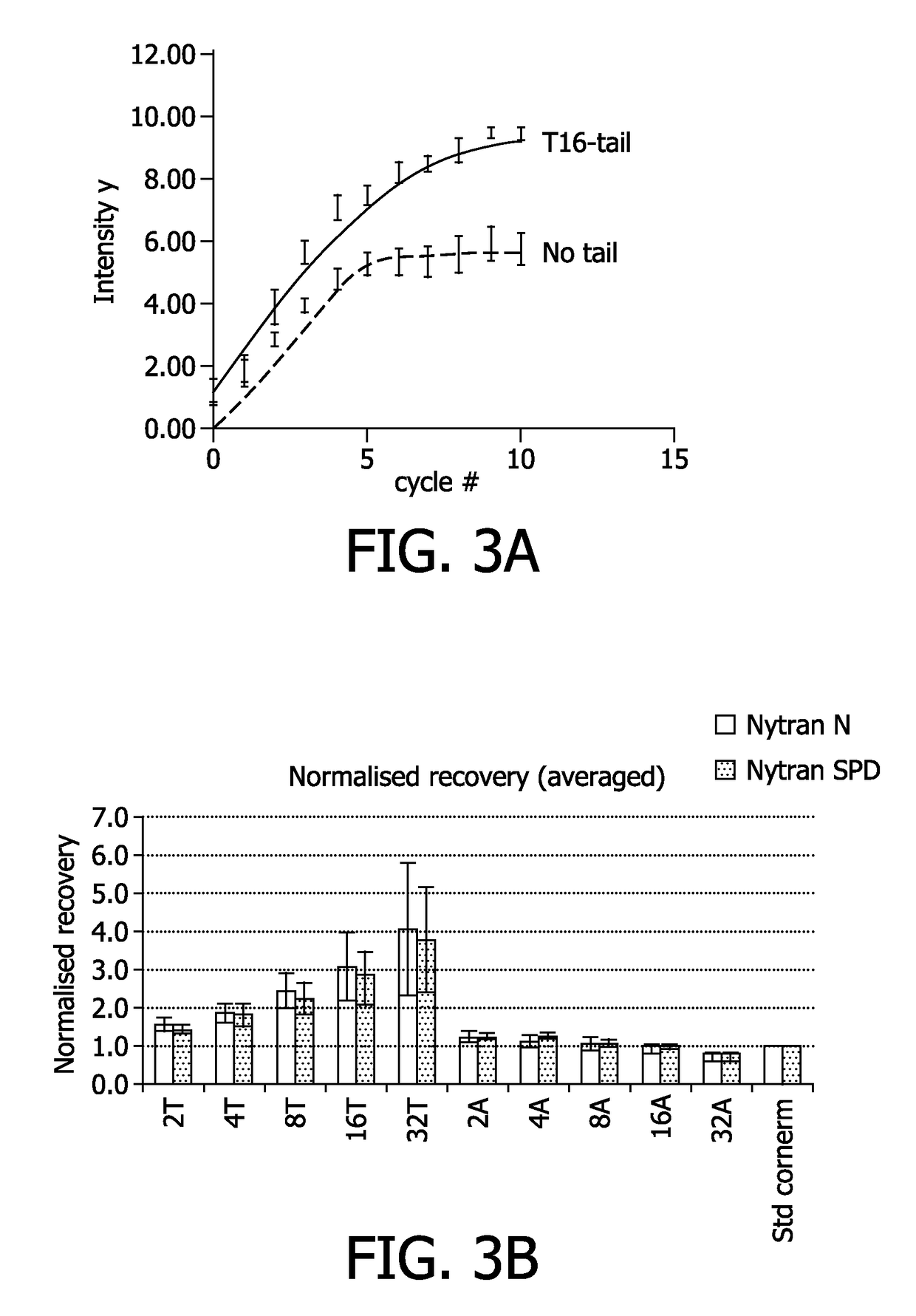Method for immobilizing nucleic acids on a support
a technology of nucleic acids and support, which is applied in the field of immobilizing nucleic acids on a support, can solve the problems of pyrimidine dimers generation, compromise of usability of microarray systems, etc., and achieve the effect of minimizing damage in the nucleic acid molecule and efficient immobilization of nucleic acids
- Summary
- Abstract
- Description
- Claims
- Application Information
AI Technical Summary
Benefits of technology
Problems solved by technology
Method used
Image
Examples
example 1
Testing of Immobilization Efficiency at Different Wavelengths
[0131]The immobilization efficiency for different immobilization methods was tested on Nytran SPC nylon membranes. In particular, light at a wavelength of 254 nm, no UV light, and light at a wavelength of 365 nm was used for exposure of nucleic acid molecules during an exposure period of 5 seconds or 20 seconds exposure. As nucleic acid molecules different oligonucleotides comprised of 16 nucleotides of only one basetype (i.e. 16A, 16C, 16G, 16T, 16U), each 16-mer labeled with an Atto655 dye, were used.
[0132]The parameter tested was the immobilization efficiency or recovery of the nucleic acids, i.e. the ratio between immobilized oligonucleotides and deposited oligonucleotides, corrected for fluorphore intensity losses during UV application. After UV application, the samples were washed in order to remove the non-bound material. As washing buffer 5×SSC with 0.1% SDS and 0.1 mg / ml herring sperm DNA was used. Washing / blockin...
example 2
Recovery Testing and Sensitivity Testing of Nucleic Acids Comprising a T-Tail
[0136]The sensitivity, i.e. the number of captured analytes per unit of time, was tested in a real-time hybridization assay. Nytran N or Nytran SPC nylon membranes were used for the experiments.
[0137]The assay was carried out with capture oligonucleotides (i.e. deposited nucleic acid molecules to be immobilized) comprising either no T-tail or a T16-tail, i.e. a stretch of 16 thymidines. These experiments were done in a flow cell, which is a device into which the membrane is clamped and the hybridization fluid is pumped through the membrane. In FIG. 3A, on the X-axis, the cycle number is depicted, which is an equivalent for the time (1 cycle takes 1 minute). Hybridization was done with complementary DNA. The hybridization buffer was 5×SSC, 0.1% SDS, 0.1 mg / ml herring sperm DNA. The temperature was set at 50° C.
[0138]As can be derived from FIG. 3A the oligonucleotides comprising a T16-tail show increased hybr...
example 3
Specificity Testing of Immobilized Nucleic Acids
[0141]The specificity of immobilized nucleic acids, i.e. the ability to distinguish between matching and mismatching targets, was tested in a binding assay.
[0142]The assay was performed with immobilized nucleic acids (capture probes) comprising 0, 4 or 16 T's. Different capture probes were used that contained perfect match, single mismatch ((AG)mut) and double mismatches((AAGG)mut). Hybridization was done using PCR product. Hybridization was done in a flow cell, which is a device into which the membrane is clamped and the hybridization fluid is pumped through the membrane. The temperature was set at 50° C. Hybridization was done for one hour. After hybridization, the buffer was changed to 2×SSC and the temperature was increased with 1° C. / min in order to make a melting curve and to assess specificity.
[0143]As can be derived from FIG. 4, which depicts de-binding curves of the complementary, single mismatch and double mismatch hybrids fo...
PUM
| Property | Measurement | Unit |
|---|---|---|
| wavelength | aaaaa | aaaaa |
| wavelength | aaaaa | aaaaa |
| wavelength | aaaaa | aaaaa |
Abstract
Description
Claims
Application Information
 Login to View More
Login to View More - R&D
- Intellectual Property
- Life Sciences
- Materials
- Tech Scout
- Unparalleled Data Quality
- Higher Quality Content
- 60% Fewer Hallucinations
Browse by: Latest US Patents, China's latest patents, Technical Efficacy Thesaurus, Application Domain, Technology Topic, Popular Technical Reports.
© 2025 PatSnap. All rights reserved.Legal|Privacy policy|Modern Slavery Act Transparency Statement|Sitemap|About US| Contact US: help@patsnap.com



